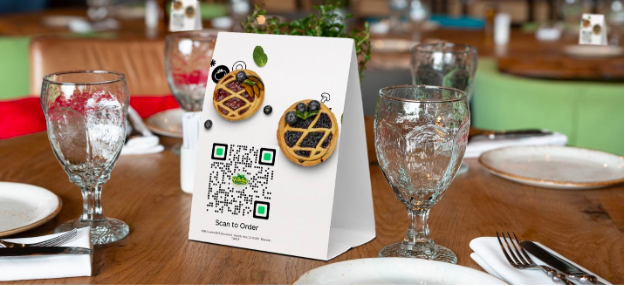How to address common restaurant problems with modern solutions with QR codes
As the restaurant industry evolves, problems also arise. These issues can significantly affect restaurant operations, which can create a ripple effect to cause problems in staffing, sourcing ingredients, providing excellent customer service, and more.

Modernizing restaurant operations with technology can simultaneously address issues and push for more creative and innovative practices in the industry. One of the best applications for these modern solutions is through the menu.
Whenever people go to restaurants, they first look for a menu where they can select the food and beverage they want to eat. Applying technology in a menu, like a QR code menu, can modernize restaurant operations and address common problems.
But how exactly can changing to a QR code menu help solve restaurant problems? Here's how.
1. Maximum productivity with less staff
The service industry has a fleeting workforce. Some people may consider it only as an entry point into something bigger or just as a temporary source of income. This is the reality that many restaurant owners can escape because of the culture built into the industry.
Of course, double-checking staff's background before hiring them is essential, but this can only do so much. The great thing is that a menu QR code can do the heaviest workloads of servers: to process orders and settle payments.
With an advanced menu QR code menu generator, restaurants can integrate these systems to do these tasks, rather than hiring servers to do it physically.
A QR code menu can maximize productivity in the ordering process and optimize operations—all while keeping labor costs relatively low with fewer employees.
2. Instant updates with an interactive menu
One of the most prominent challenges restaurants face is having limited opportunities to update their menus. It can be costly to develop new food selections and reprint menus to reflect changes and updates where customers can easily see them.
With a QR code menu, restaurants can quickly update their menu because changes reflect in real time. A personalized dashboard in the QR code menu generator allows restaurants to make changes whenever needed to ensure the food selections are constantly updated.
The great news is that restaurants don't need to reprint new QR code menus. Dynamic QR codes allow restaurants to update the information inside the code even after the QR code is generated and printed. Restaurants can cut down on paper and printing costs for their menus.
3. Accounting and sales performance
Another problem that most restaurants encounter is inaccurate accounting of sales. Even if restaurant staff take care of every sale, some transactions may be missing or inaccurately accounted for, especially during peak hours.
In the end, most staff end up paying for the imbalanced accounts in sales performance. With a QR code menu, restaurants can prevent situations like these from happening. Consequently, restaurant staff can avoid paying for these inaccuracies.
An advanced QR code menu offers payment features that customers can directly settle from their mobile wallet or mobile banking app. Every transaction is accounted for in the database, leaving little to no room for errors.
4. Serve more customers with quicker table turnover
Restaurants can serve with limited tables and time for the day. Customers may also intend to stay for so much longer, even after they finish their food, to have conversations and have a good time.
To lessen the time customers spend during the ordering process, where servers take orders or call for payment, restaurants can use a QR code menu to provide these advanced features as an all-in-one solution. Less interaction means less time to complete processes.
Conclusion
With a more efficient process, restaurants can have a quick table turnover. More people can sit in restaurants, which means more orders and better sales! A QR code menu can address the problem of limited time and space while increasing sales at the same time.
